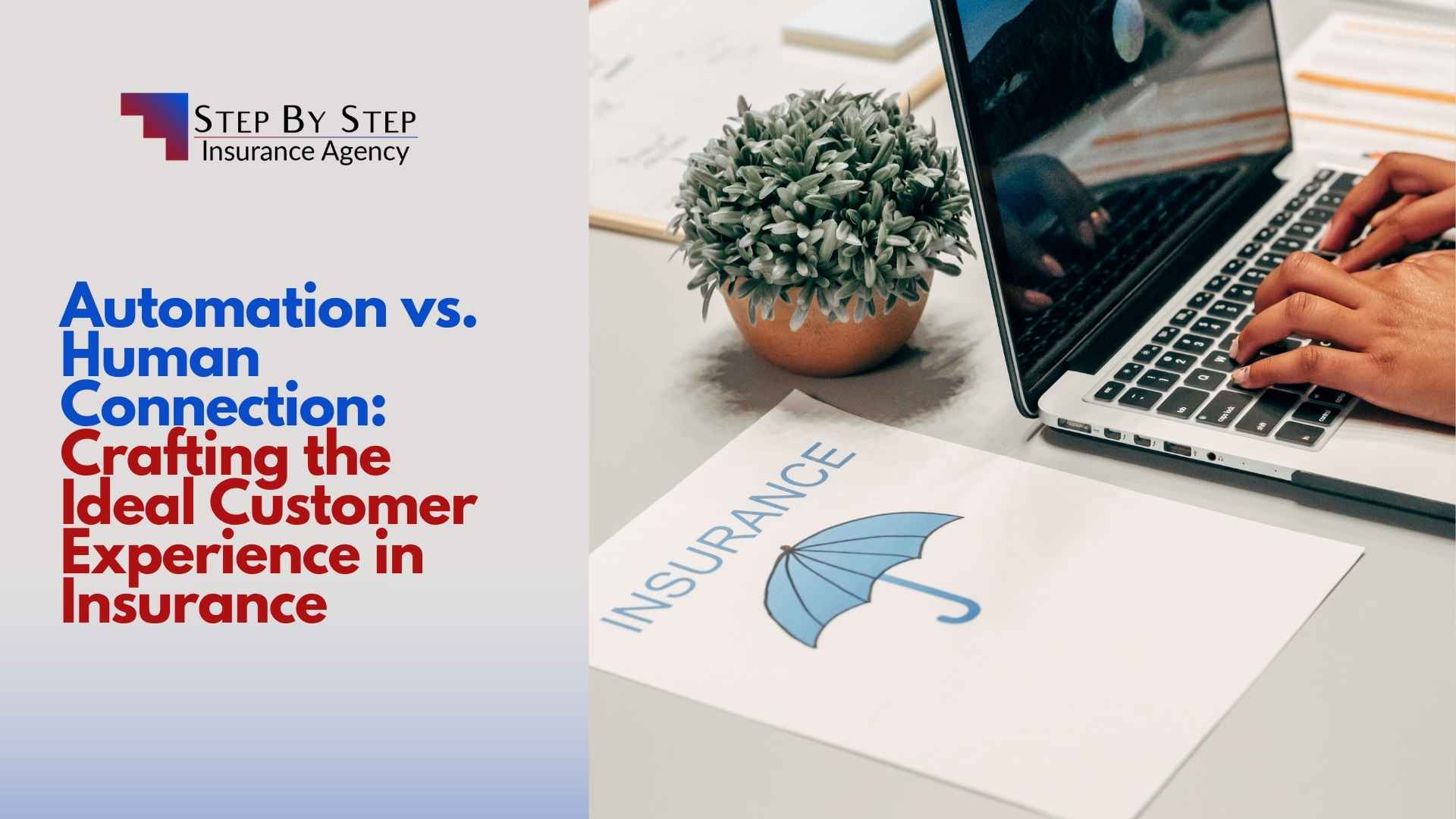Automation vs. Human Connection: Crafting the Ideal Customer Experience in Insurance
The insurance industry is undergoing a transformative phase where technology and personal interaction converge to redefine customer experience.
As companies adapt to technological advancements, the balance between automation and human connection has become a pivotal consideration. Striking this balance is essential for delivering efficient services while maintaining the trust and empathy that define exceptional customer experiences.
This article delves into the rise of automation in insurance, the enduring importance of human connection, and actionable strategies to merge these elements into a cohesive customer experience.
The Rise of Automation in Insurance
Automation has revolutionized the insurance industry, reshaping how companies handle underwriting, claims processing, customer service, and beyond. By incorporating sophisticated automated systems, insurers are achieving unprecedented levels of efficiency, cost-effectiveness, and data utilization.
1. Increased Efficiency
Automated systems streamline operations, enabling insurers to process higher volumes of transactions with fewer resources. For example, automated underwriting systems leverage algorithms to assess risks and determine policy eligibility within seconds.
According to a McKinsey report, automation can cut processing times by up to 80%, allowing insurers to respond swiftly to customer inquiries and claims. This rapid turnaround fosters a more seamless customer experience, particularly for straightforward tasks that demand quick resolutions.
2. Cost Reduction
Automation minimizes the need for manual intervention in routine tasks, significantly reducing operational costs. These savings often translate to more competitive pricing for consumers. Moreover, automated processes decrease the likelihood of human error, ensuring greater accuracy in data management and decision-making. Fewer errors mean fewer costly corrections, further enhancing the company’s financial efficiency.
3. Enhanced Data Analysis
The ability to collect and analyze vast amounts of data in real-time is one of automation’s most significant advantages. By leveraging advanced analytics, insurers gain valuable insights into customer behavior, risk patterns, and market trends. These insights enable companies to design more targeted products and marketing strategies, improving customer satisfaction and profitability. For instance, predictive analytics can identify policyholders likely to file claims, allowing insurers to take proactive measures to mitigate risks.
The Importance of Human Connection
While automation offers numerous benefits, the human element remains indispensable in the insurance industry. Building genuine relationships with customers fosters trust, loyalty, and a sense of security—qualities that automated systems cannot replicate.
1. Trust Building
Insurance is inherently a relationship-driven business. Customers need assurance that their insurer understands their unique needs and will stand by them in times of uncertainty. A survey by Accenture revealed that 62% of consumers prefer interacting with human representatives when handling complex issues or claims. Personal interactions convey a level of commitment and reliability that automated systems struggle to match.
2. Empathy and Understanding
Insurance often deals with sensitive and emotionally charged situations, such as health crises, accidents, or natural disasters. In these moments, customers value empathy and personalized support. Human agents excel at demonstrating compassion, providing tailored guidance, and alleviating stress. This emotional connection builds goodwill and strengthens the customer-agent relationship.
3. Complex Problem Solving
While automation is ideal for routine tasks, it falters in the face of complex scenarios requiring nuanced judgment. Insurance claims involving liability disputes, intricate policy terms, or extenuating circumstances often demand human expertise. Agents equipped with industry knowledge and critical thinking skills can navigate these complexities effectively, ensuring fair and satisfactory resolutions.
Striking the Balance: Integrating Automation and Human Connection
To create an optimal customer experience, insurance companies must harmonize automation and human interaction. A balanced approach ensures operational efficiency without compromising the personal touch that customers value. Below are strategies to achieve this integration:
1. Implement Hybrid Models
A hybrid model blends the efficiency of automation with the adaptability of human support. For instance, customers can initiate claims through an intuitive online portal but have the option to consult a representative if they encounter challenges. This approach maintains a seamless workflow while providing personalized assistance when necessary. Automated chatbots can handle FAQs, whereas complex inquiries are escalated to human agents.
2. Invest in Training
Human agents remain an integral part of the customer journey, and their training should reflect this importance. Beyond technical knowledge, employees should develop soft skills such as empathy, active listening, and effective communication. Equipping agents with these skills enhances their ability to connect with customers on a deeper level. Additionally, training programs should familiarize agents with automated tools to optimize their efficiency.
3. Leverage Technology for Personalization
Automation and data analytics enable insurers to offer highly personalized experiences. By analyzing customer interactions and preferences, automated systems can provide tailored product recommendations and timely reminders. When human agents engage with customers, they can use these insights to deliver more relevant and meaningful interactions. For example, a customer seeking a new policy might receive a personalized quote based on their previous interactions and current needs.
4. Solicit Customer Feedback
Customer feedback is invaluable for refining both automated systems and human interactions. Regular surveys, focus groups, and feedback forms help insurers understand customer expectations and pain points. Insurers should use this information to make iterative improvements, ensuring that their services remain aligned with evolving customer preferences.
5. Ensure Seamless Transitions
A smooth transition between automated systems and human representatives is crucial for a cohesive customer experience. If a customer starts a claim online and later consults a representative, their information should be readily accessible to avoid redundancy. Continuity fosters trust and minimizes frustration, demonstrating that the company values the customer’s time and effort.
6. Prioritize Transparency
Transparency is key to building trust, especially when integrating automation into traditionally human-centered processes. Insurers should clearly communicate how automated systems work, what tasks they handle, and when customers can expect human intervention. Transparent practices alleviate concerns about impersonal service and reinforce the company’s commitment to customer care.
Case Studies: Successful Integration of Automation and Human Connection
In Kenya, several insurance companies have effectively integrated automation with human interaction to enhance customer experiences. Here are some notable examples:
Case Study 1: ICEA Lion Group
ICEA Lion, a leading insurance provider in Kenya, sought to improve its operational efficiency and customer satisfaction by automating its business claims and new business processes. The company faced challenges such as processing delays, dependency on physical document movement, and difficulties in tracking and monitoring processes.
Solution Implemented:
ICEA Lion partnered with Simba Technology Ltd. to implement a workflow automation and Enterprise Content Management (ECM) platform. This solution automated key processes, including claims processing for general insurance, new business acquisition, mail handling, and records management.
Benefits Achieved:
Enhanced Efficiency: The automation led to reduced turnaround times (TAT) for core processes, improving overall productivity.
Improved Document Management: A better archiving system provided faster access to documents and customer information.
Scalability: The scalable solution enabled quicker rollout of initiatives and the ability to handle increasing business volumes.
Unified Interface: A unified interface for all underlying applications enhanced user experience and allowed employees to perform multiple tasks through a single system.
Performance Tracking: Enhanced performance tracking of business users and processes facilitated better monitoring and management.
This integration of automation with human oversight allowed ICEA Lion to maintain personalized customer interactions while benefiting from increased operational efficiency.
Case Study 2: AAR Insurance Kenya Limited
AAR Insurance Kenya Limited recognized the need to adopt technology as a strategic resource to enhance its performance and customer service. The company aimed to streamline its operations and improve service delivery through technological integration.
Solution Implemented:
AAR Insurance invested in various technological solutions, including customer relationship management (CRM) systems and digital platforms, to automate routine tasks and facilitate better customer interactions.
Benefits Achieved:
Improved Service Delivery: Automation of routine tasks allowed staff to focus on complex customer needs, enhancing service quality.
Operational Efficiency: Technology integration streamlined processes, reducing operational costs and improving turnaround times.
Customer Satisfaction: The blend of automated services with human interaction led to higher customer satisfaction and loyalty.
By strategically adopting technology, AAR Insurance balanced automation with human touch, ensuring efficient operations without compromising on personalized customer service.
These case studies demonstrate that Kenyan insurance companies are successfully integrating automation with human interaction to enhance customer experiences, improve operational efficiency, and maintain personalized services.
Challenges and Future Outlook
While the integration of automation and human connection offers numerous benefits, it also presents challenges. Companies must navigate concerns about job displacement, data privacy, and the potential for over-reliance on technology. Striking the right balance requires continuous evaluation and adaptation.
Looking ahead, advancements in artificial intelligence and machine learning will further enhance the capabilities of automated systems. However, the human element will remain irreplaceable, particularly in scenarios demanding empathy, creativity, and ethical judgment. By staying attuned to customer needs and embracing innovation, insurers can position themselves as leaders in a dynamic industry.
Conclusion
The interplay between automation and human connection is reshaping the insurance landscape. Rather than viewing these elements as opposing forces, insurers should recognize their complementary potential. Automation drives efficiency and scalability, while human interaction builds trust and loyalty.
By integrating both seamlessly, companies can craft an ideal customer experience that meets the demands of a modern, diverse clientele. Ultimately, this balanced approach will enable insurers to thrive in an increasingly competitive market.





